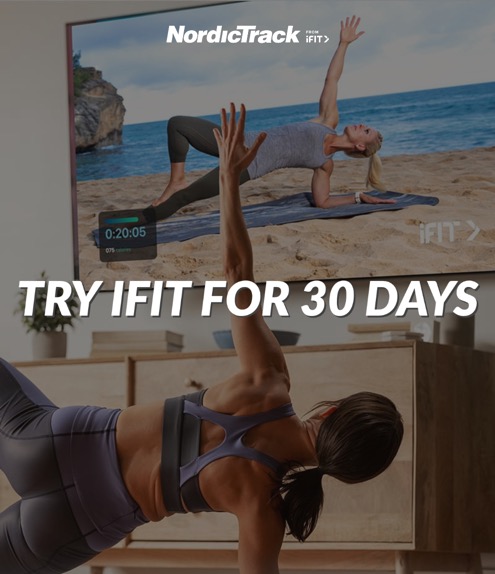
If you’re searching for a workout that supports cardiovascular health and engages nearly all major muscle groups, a rowing machine workout may be your best option. Rowing is a whole-body exercise that activates nearly 85% of your musculature, engaging the legs, glutes, core, back, and arms in a single fluid stroke¹. This unique combination makes rowing one of the most efficient and versatile forms of indoor training available today.
With the right structure, you can turn each session into a high-intensity, low-impact powerhouse using techniques such as HIIT rowing, rowing interval training, and targeted cardio intervals. If you want to see how structured guidance can amplify results, explore our guide on why a personalized training program gets you real results.
Why Choose Rowing for High-Intensity Cardio

Rowing isn’t reserved for collegiate athletes or Olympians. Research shows it delivers a rare blend of efficiency, adaptability, and safety:
- Full-Body Engagement
- Unlike treadmill walking or cycling, which primarily target the lower body, a rowing machine workout requires coordinated activation of both upper and lower muscle groups. If you’re weighing options, our breakdown on how cardio machines compare is a helpful side-by-side look.
- Low-Impact Efficiency
- Because you’re seated and moving in a controlled plane, rowing is gentler on knees, hips, and ankles than high-impact sports like running. This makes it a sustainable choice for those managing orthopedic limitations, while still demanding high mechanical power outputs.
- Cardio Conditioning & Metabolic Stress
- Rowing is metabolically demanding. In a study of elite open-class rowers, energy expenditure reached 15.6–49.8 kcal per minute, with carbohydrate utilization climbing from ~46% at lower intensities to 100% at maximal effort².
- Versatility for Training Goals
- Whether your goal is endurance, fat loss, or power development, rowing adapts. Laboratory evidence confirms that rowing can serve as both an aerobic modality (supporting steady-state fat oxidation) and an anaerobic modality (demanding short bursts of glycolytic power)¹²³.
When paired with NordicTrack rowers, you get machines that are compatible with iFIT®, offering AutoAdjust™ technology for resistance control and access to a variety of global and studio-based workouts. The RW900 includes a 24″ HD touchscreen and 26 levels of Silent Magnetic Resistance™, designed for quiet operation and interactive iFIT® training while the RW700 features a 10″ HD display and a space-conscious frame, suitable for users with limited workout space.
Building Your HIIT Rowing Plan
Why HIIT Works on a Rower
High-intensity interval training (HIIT) is particularly effective on rowing machines because it mirrors the energy system demands observed in competitive rowing: short bursts of explosive power, followed by partial recovery. Elite rowers have been shown to sustain mechanical power outputs up to 590 W during racing², highlighting the sport’s demand for repeated anaerobic effort.
HIIT rowing helps improve:
- Cardiovascular fitness (VO₂max and cardiac efficiency)
- Metabolic flexibility (switching between carbs and fat as fuel)
- Preserve muscle mass while supporting overall energy expenditure during high-intensity sessions
Sample 20-Minute HIIT Rowing Machine Workout Session

- Warm-Up (3 min): Light rowing, low resistance
- Intervals: 1 min at 85–90% effort, 1 min light pace (repeat × 8 rounds)
- Cool-Down (3 min): Gradually reduce stroke rate and intensity
For beginners, protocols suggest starting with 30 seconds of effort followed by 90 seconds of rest, then shortening recovery as tolerance improves².
Rowing Interval Training for Progress
Beyond basic HIIT, structured rowing intervals allow you to target specific adaptations:
- Pyramid Intervals: Progressively increase stroke rate or wattage each minute until a peak, then taper back down — ideal for building endurance under fatigue.
- Distance Targets: Sprint 500 m, rest for 1 min, repeat × 4–6 — simulates racing demands.
- Power Rows: Explosive 30-second pulls followed by 90 seconds recovery — builds the neuromuscular drive linked to rowing performance.
Notably, in collegiate rowers, vertical jump height (a measure of lower-body explosive power) strongly predicted 500 m rowing performance (R² = 0.903)¹. This reinforces the value of power-focused intervals and supplementary plyometric training for improving rowing efficiency.
Energy Systems and Fat Oxidation: What the Science Shows
Rowing and Substrate Use
Rowing is both aerobic and anaerobic, meaning it challenges short-term energy systems for sprints while also relying heavily on sustained oxidative metabolism over longer intervals².
Fat Oxidation Insights
In controlled lab testing, maximal fat oxidation (MFO) rates during rowing averaged about 0.40 g·min⁻¹, which was lower than treadmill exercise (0.61 g·min⁻¹) but similar to elliptical training⁴. The intensity at which fat burning peaked (Fatmax) also occurred earlier in rowing (31.6% of VO₂peak) than in treadmill walking or running (56.0%).
What does this mean for you? If your primary goal is maximizing fat metabolism, treadmill training may be the most effective option. However, rowing still delivers a high calorie burn with the added benefit of being low impact, making it an excellent choice for sustainable high-intensity training.
Eccentric Training Possibilities
Innovations like powered eccentric rowing machines show that adding resistance to the return stroke increases oxygen consumption, heart rate, and muscle activation, leading to measurable cardiovascular and musculoskeletal benefits³. While not yet mainstream for home gyms, this line of research highlights rowing’s adaptability for both rehabilitation and performance optimization.
Safety & Setup Tips

Rowing is highly safe when performed with proper mechanics. Keep these fundamentals in mind:
- Sequence Matters: Drive with your legs → hinge from your hips → finish with your arms. Reverse the order on the recovery. This sequencing distributes workload evenly and reduces spinal strain¹.
- Maintain Posture: Keep a neutral spine and avoid rounding your lower back.
- Resistance Selection: Higher intensity doesn’t always mean highest damper settings. Research shows energy cost rises steeply even at moderate intensities² — focus on power and form, not max resistance.
- Hydration & Recovery: Because rowing produces rapid glycogen depletion and lactate accumulation², hydration and refueling are key after high-intensity sessions.
- Space & Clearance: Follow equipment safety guidelines to ensure room for full stroke extension.
Explore More
- Experience iFIT® Global Rowing Machine Workouts: Train with professional athletes, explore waterways worldwide, and let AutoAdjust™ control your resistance in real-time.
- Shop the NordicTrack RW900 Rower: The RW900 includes a 24” HD touchscreen and 26 levels of Silent Magnetic Resistance™, designed for quiet operation and compatibility with iFIT® training.
- Next Steps: Try adding a 10-minute HIIT rowing warm-up before your treadmill or cycling workouts to enhance cardiovascular stimulation and overall training intensity.
FAQs: Rowing Machine Workout
In laboratory settings, elite rowers have demonstrated high energy demands during maximal exertion, reflecting the intensity of the sport².
2–4 sessions per week provide strong cardiovascular and muscular benefits while allowing adequate recovery.
Rowing elicited VO₂peak values similar to treadmill and elliptical exercise in controlled testing⁴, while producing less joint impact.
Start with 30 seconds work / 90 seconds recovery, as supported by published protocols².
Legs, glutes, core, back, shoulders, and arms — roughly 85% of your muscles¹.
Rowing elicits strong cardiovascular strain, but treadmill exercise supports higher maximal fat oxidation (0.61 g·min⁻¹ vs. 0.40 g·min⁻¹ on rower)⁴.
References
- The Sport Journal. Relationships Among Muscle Characteristics and Rowing Performance in Collegiate Crew Members.
- Frontiers in Physiology. High Energetic Demand of Elite Rowing – Implications for Training and Nutrition. (2022).
- Medicine in Novel Technology and Devices. Eccentric training with a powered rowing machine. (2019).
- Journal of Functional Morphology and Kinesiology. Maximal Fat Oxidation: Comparison between Treadmill, Elliptical and Rowing Exercises. (2021).
Disclaimer: The primary purpose of this blog post is to inform and entertain. Nothing on the post constitutes or is intended to be a substitute for professional medical advice, prevention, diagnosis, or treatment. Reliance on any information provided on the blog is solely at your own risk. Always seek the advice of your physician or other qualified health provider with any questions you may have regarding a medical condition, and please consult your doctor or other health care provider before making any changes to your diet, sleep methods, daily activity, or fitness routine. Do not disregard professional medical advice or delay seeking it because of information available on this blog. NordicTrack assumes no responsibility for any personal injury or damage sustained by any recommendations, opinions, or advice given in this article. Always follow the safety precautions included in the owner’s manual of your fitness equipment.


